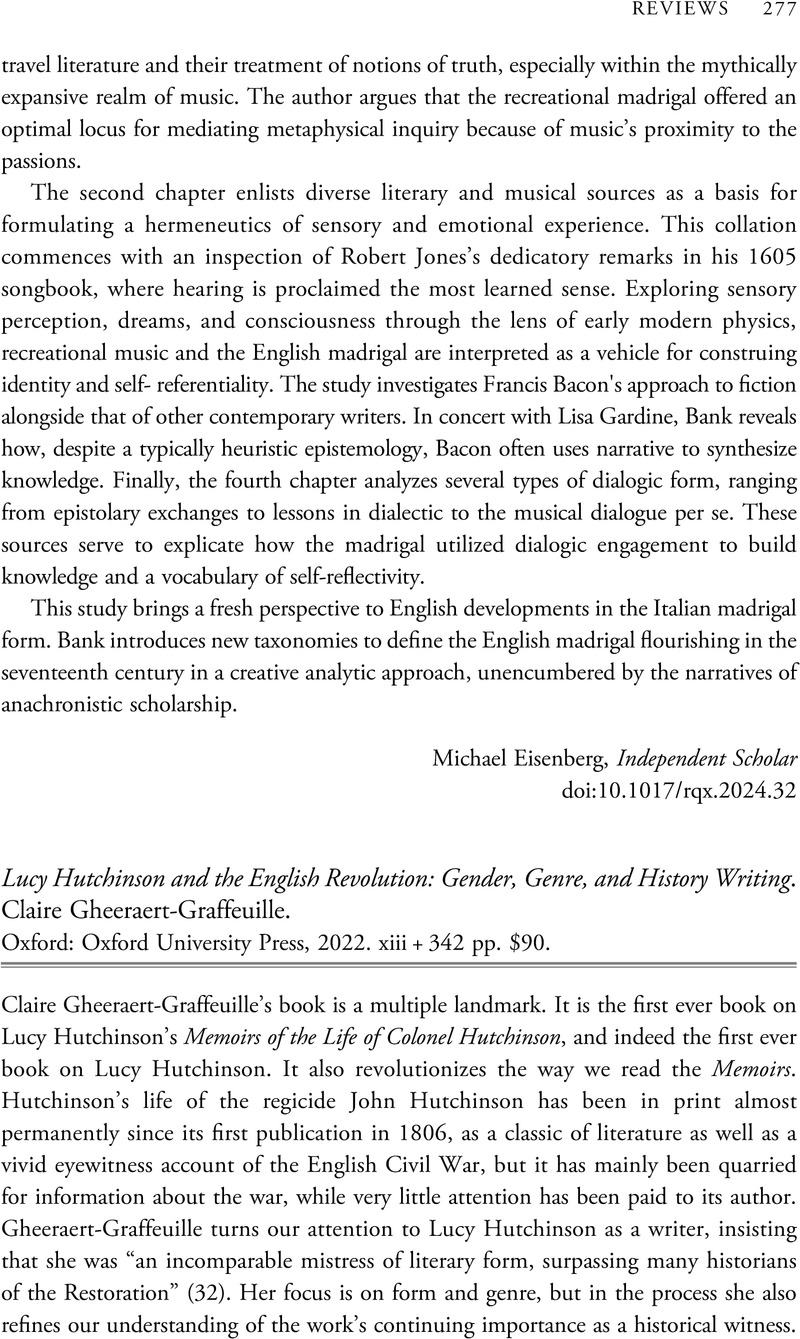No CrossRef data available.
Article contents
Lucy Hutchinson and the English Revolution: Gender, Genre, and History Writing. Claire Gheeraert-Graffeuille. Oxford: Oxford University Press, 2022. xiii + 342 pp. $90.
Review products
Lucy Hutchinson and the English Revolution: Gender, Genre, and History Writing. Claire Gheeraert-Graffeuille. Oxford: Oxford University Press, 2022. xiii + 342 pp. $90.
Published online by Cambridge University Press: 24 April 2024
Abstract
An abstract is not available for this content so a preview has been provided. Please use the Get access link above for information on how to access this content.

- Type
- Review
- Information
- Copyright
- Copyright © The Author(s), 2024. Published by Cambridge University Press on behalf of The Renaissance Society of America



